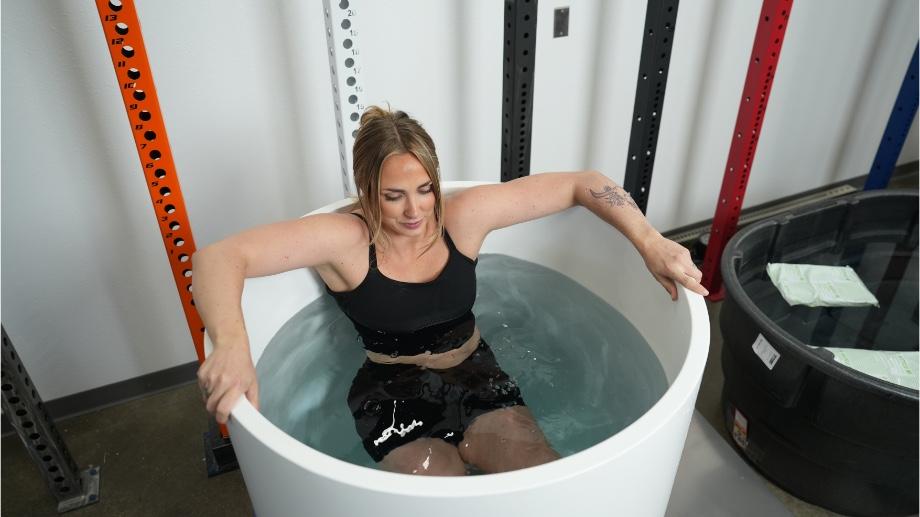We test and review fitness products based on an independent, multi-point methodology. If you use our links to purchase something, we may earn a commission. Read our disclosures.
Did you come across cold-plunging on TikTok or social media and are now curious if it’s for you? For some people—especially in warmer weather—immersing yourself in ice-cold water feels like the best thing since sliced bread. For others, regardless of their body temperature, a cold plunge feels like torture, triggering their fight-or-flight response (especially during the winter months).
That said, the many cold plunge health benefits make them worth considering all year round (and not just in the summer). Ice baths can help to reduce muscle soreness, strengthen your immune system, lower stress levels, improve blood flow and circulation, and support weight loss.
RELATED: How To Cold Plunge
As a longtime certified personal trainer, I’m no stranger to the cold plunge and am a fan when overheated. So, I’m here to explain the method in detail before describing five cold plunge benefits. Then, I’ll cover the drawbacks of cold water immersion and several factors that affect the length of time you should cold plunge. By the end of this article, I’m confident you’ll be ready to plunge in.
Editor’s Note and Medical Disclaimer: This article is intended for educational and informational purposes only. It is not intended as a substitute for medical advice.
What Is A Cold Plunge?
A cold plunge is where you immerse yourself in ice-cold water (usually between 53 and 60 degrees Fahrenheit) for a short period. You can do this using one of the best cold plunge tubs or a pool designed specifically for this purpose.
I’ll explain the benefits and drawbacks of cold plunges below, but for now, it’s important to note that cold plunge sessions typically last between five and 15 minutes. However, if you’re a beginner to cold water immersion, you may reap the benefits in as little as 30 seconds.
What Is the Wim Hof Method?
Established by Wim Hof—also known as “The Iceman”—the Wim Hof method combines breathing techniques, cold water therapy, and commitment (which includes meditation and visualization techniques). Potential benefits of following the Wim Hof method include increased energy, better sleep, lower stress, an improved immune system, and more focus and willpower.
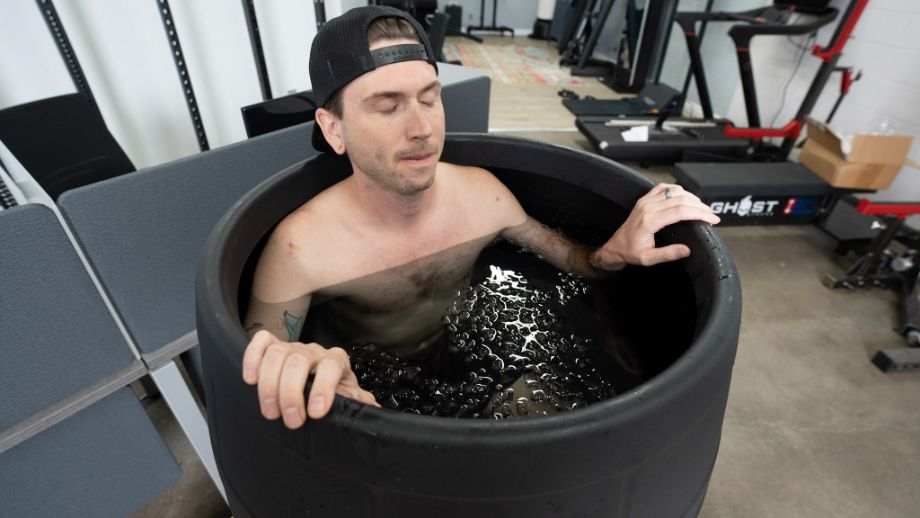
The cold water therapy element of the Wim Hof method doesn’t have to be cold plunges, but it can be. Alternatively, you can take cold showers, do cold water swimming, or even perform cryotherapy (we’ve got a guide on cryotherapy vs cold plunge for those who want to learn more about the similarities and differences between both methods).
Benefits of Cold Plunges
The potential benefits of cold plunges include faster muscle recovery, a stronger immune system, and weight loss support. Read on for more:
May Help Speed Up Muscle Recovery
After an intense workout, cold plunging may help expedite your muscle recovery by reducing inflammation, removing waste products (for example, lactic acid) from your muscles, and numbing your nerves. Further, a 2018 Exercise Physiology1 study found that water immersion can have “a significant positive impact” on reducing markers of muscle damage, soreness, fatigue, and inflammation.
RELATED: DIY Cold Plunge Ideas
May Help Strengthen Your Immune System
A European Journal of Applied Physiology and Occupational Physiology2 study found that repeated cold water immersion “increased metabolic rate due to shivering the elevated blood concentrations of catecholamines, activating the immune system to a slight extent.” Studies have also shown that your body produces more white blood cells3 as a result of cold water immersion, but this isn’t definitive.
May Lift Your Mood and Lower Stress
I often take a cold shower to decrease my stress levels, as the shock response seems to trigger instant improvements in my mental health. Plunging in icy water takes this a step further by helping you feel “more active, alert, attentive, proud, and inspired and less distressed and nervous,” according to a 2023 Biology (Basel)4 study. The reason for this? Your body releases endorphins—aka one of the happiness hormones—when it’s exposed to cold water.
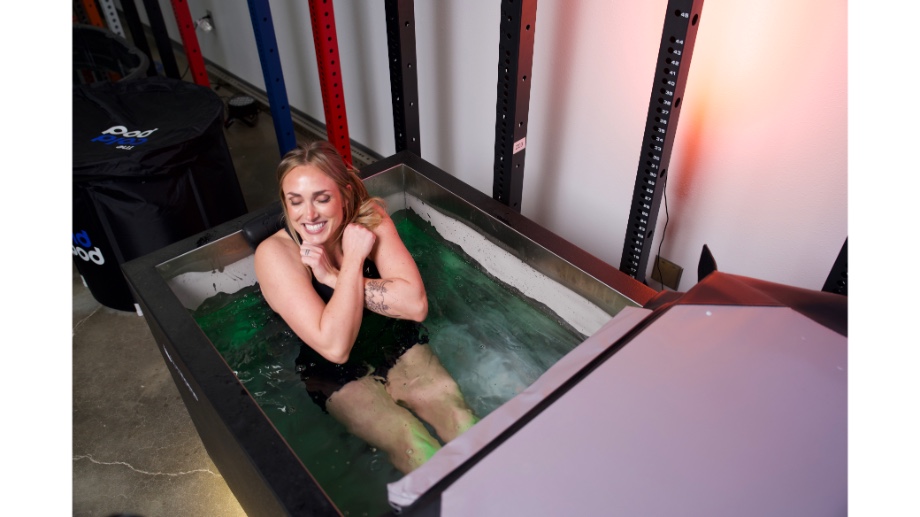
Helps Improve Blood Flow and Circulation
Going from a warm to a cold environment can help improve blood flow and circulation. Your blood vessels constrict—vasoconstriction—when you first hit cold water before dilating once you leave it—vasodilation. This process can help to deliver nutrients and oxygen more efficiently to tissues in your body.
May Help Support Weight Loss
A 2019 review5 in Biology (Basel) found that “cold exposure is an effective method to activate the thermogenic activity of brown adipose tissue (BAT), increase energy expenditure in BAT, and improve glucose homeostasis, insulin sensitivity, and lipid metabolism.”
While regular exercise and being in a calorie deficit are the most crucial components of weight loss and maintenance, regular cold immersion may help.
Drawbacks Of Cold Plunges
Before jumping in, it’s important to know the possible drawbacks of cold plunges to help you make an informed decision.
It Takes Time To See Results
As the famous saying goes, “Rome wasn’t built in a day.” Similarly, if you believe that you can get into a cold plunge tub and see immediate results, you might be disappointed. Speaking from experience, it can take time to see those enticing benefits like improved mood and faster muscle recovery. Set your expectations accordingly, and be prepared to be in it for the long haul.
May Reduce Strength and Muscle Gains
A 2015 Journal of Physiology6 study found that cold water immersion “attenuates the acute changes in satellite cell numbers and activity of kinases that regulate muscle hypertrophy, which may translate to smaller long-term training gains in muscle strength and hypertrophy.” If strength or muscular hypertrophy is your primary goal, cold plunges may not be right for you.
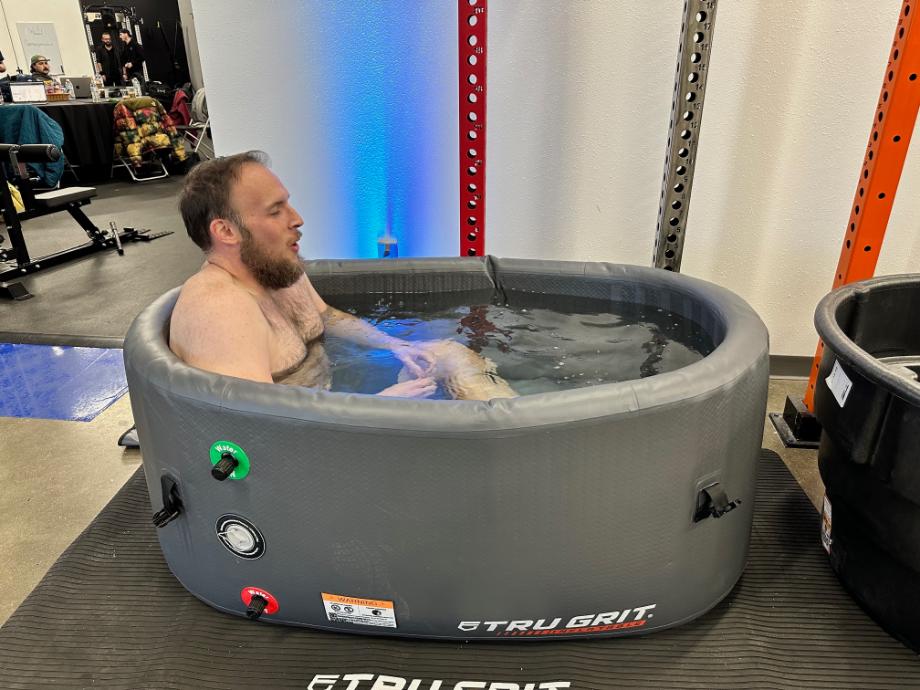
May Lead to Hypothermia or Cold Shock Response
Cold plunges may lead to hypothermia or a cold shock response in extreme cases. Hypothermia is when your body temperature drops significantly, causing shivering, loss of coordination, and more. The cold shock response occurs when you first experience cold water, and can lead to gasping and panic. Start slow if you’re new to cold water exposure.
How Long Should You Cold Plunge?
As mentioned above, cold plunge sessions typically last between five and 15 minutes. However, several factors can affect the length of time you should cold plunge. These include:
- Experience. Beginners should start slowly (less than five minutes) and gradually build up their tolerance. On the other hand, those with years of experience may find they need more than 15 minutes.
- Water temperature. The colder the water, the shorter the time you’ll likely be able to plunge. Sometimes, you won’t have control over the water temperature.
- Tolerance. Some people have a higher tolerance for cold baths than others. If yours is low, don’t let this put you off—it’s not a competition, and you can reap the benefits of cold plunges in as little as 30 seconds.
- Goals. If you have specific goals (such as post-workout recovery after an intense physical activity session), you might want to cold plunge for longer periods.
- Health conditions. Those with pre-existing medical conditions may find that they’re limited in the amount of time that they can spend in a cold plunge. Speak to a healthcare provider before you start cold water exposure.
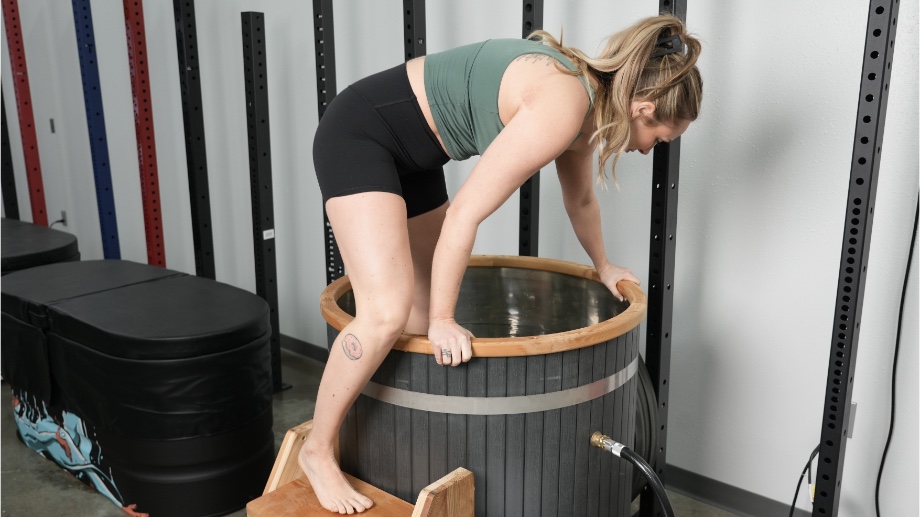
Cold Plunge Benefits: Final Thoughts
Cold plunge benefits include the following:
- Faster muscle recovery
- A stronger immune system
- Better mood and lower stress levels
- Improved blood flow and circulation
- May support weight loss
It’s important to know that it can take time to see results from immersing yourself in cold water. In extreme cases, cold plunging can lead to hypothermia or a cold shock response, so if you’re new to cold immersion, gradually acclimate yourself to it.
Cold Plunge Benefits: FAQs
Is cold plunging actually good for you?
Yes, cold plunging can be good for you. The benefits of cold water immersion include faster post-exercise muscle recovery, improved blood flow and circulation, and weight loss support.
There are, however, drawbacks of cold plunges. It can take time to see results, and regular cold baths may reduce strength and muscle gains6. Additionally, in extreme cases, cold plunges can lead to hypothermia or a cold shock response.
Who should avoid a cold plunge?
The following people should be careful when cold plunging:
-Children
-Older people
-Pregnant people
-People with high blood pressure
-People with heart conditions
-People with asthma
-People with diabetes
If this is you—and you still want to try cold exposure—speak to your healthcare professional before you begin.
Is sauna or cold plunge better?
We’ve got a handy cold plunge vs sauna guide, which goes into more detail, but to summarize, every individual is different, and what works for one may not work for another. Cold plunges may be better than saunas for relieving pain and inflammation, but saunas may be better for improving cardiovascular health and increasing energy levels. Try both to see which works for you.
Is a cold plunge sanitary?
If you have a cold plunge tub at home—or are thinking about purchasing one—look for one that’s easy to drain and clean if sanitary levels are important to you. For those using public pools, speak to a staff member about water quality management, cleaning practices, and rules around user hygiene to ensure the sanitation is at a level you’re comfortable with.
References
- Dupuy, O., Douzi, W., Theurot, D., Bosquet, L., & Dugué, B. (2018). An Evidence-Based approach for choosing post-exercise recovery techniques to reduce markers of muscle damage, soreness, fatigue, and inflammation: A Systematic Review with Meta-Analysis. Frontiers in Physiology, 9. https://doi.org/10.3389/fphys.2018.00403
- Janský L, Pospísilová D, Honzová S, Ulicný B, Srámek P, Zeman V, Kamínková J. Immune system of cold-exposed and cold-adapted humans. Eur J Appl Physiol Occup Physiol. 1996;72(5-6):445-50. doi: 10.1007/BF00242274. PMID: 8925815.
- Lombardi G, Ricci C, Banfi G. Effect of winter swimming on haematological parameters. Biochem Med (Zagreb). 2011;21(1):71-8. doi: 10.11613/bm.2011.014. PMID: 22141210.
- Yankouskaya A, Williamson R, Stacey C, Totman JJ, Massey H. Short-Term Head-Out Whole-Body Cold-Water Immersion Facilitates Positive Affect and Increases Interaction between Large-Scale Brain Networks. Biology (Basel). 2023 Jan 29;12(2):211. doi: 10.3390/biology12020211. PMID: 36829490; PMCID: PMC9953392.
- Peres Valgas da Silva C, Hernández-Saavedra D, White JD, Stanford KI. Cold and Exercise: Therapeutic Tools to Activate Brown Adipose Tissue and Combat Obesity. Biology (Basel). 2019 Feb 12;8(1):9. doi: 10.3390/biology8010009. PMID: 30759802; PMCID: PMC6466122.
- Roberts LA, Raastad T, Markworth JF, Figueiredo VC, Egner IM, Shield A, Cameron-Smith D, Coombes JS, Peake JM. Post-exercise cold water immersion attenuates acute anabolic signalling and long-term adaptations in muscle to strength training. J Physiol. 2015 Sep 15;593(18):4285-301. doi: 10.1113/JP270570. Epub 2015 Aug 13. PMID: 26174323; PMCID: PMC4594298.
Further reading

We tried the fitness app created by Thor himself, Chris Hemsworth. See if this training program is right for you in our Centr review. Read more

Bilateral exercises are great, but unilateral exercises have their perks too. Let’s not pick sides; check out our unilateral training guide right here! Read more

Tired of doing the same old exercises on leg day? Shake things up with this kettlebell leg workout! Read more

A certified strength coach breaks down the benefits, best alternatives, the do’s and don’ts, and everything in between of the old-school Jefferson squat. Read more

